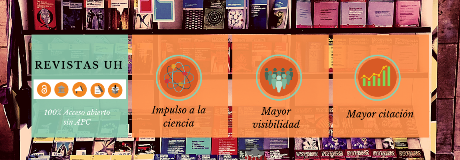Code as a Creative Medium for Variable Formation in Graphic Design.
##plugins.themes.bootstrap3.article.main##
Abstract
Today, much of the graphic design we encounter is created, distributed, and experienced through computational media. Designers can use computers beyond standard software, particularly for writing their own software. However, research on code––a raw computational medium for generative form-giving––is yet largely absent within the context of graphic design (Bartlett and Tatum 2020; Shim 2020; Shim 2021). This practitioner’s essay includes a literature review and an examination of related graphic design work to establish the contextual background of computational approaches in graphic design, particularly those that define programming as both material and process for designing generative systems. Examples of such generative systems in this practitioner’s work produce algorithmically and parametrically manipulated visual variations that are dynamic to user input, external data sources and randomness. Key to taking a computational approach in graphic design and generating ‘variable formations’, or the process of building generative systems that emerge dynamic forms using code and data, is understanding and applying code as a creative medium. As such, this reflective essay demonstrates how computation is used as a graphic design medium to create variability in the appearance and behavior of visual forms.
##plugins.themes.bootstrap3.article.details##

This work is licensed under a Creative Commons Attribution-NonCommercial-ShareAlike 4.0 International License.
- Attribution — You must give appropriate credit , provide a link to the license, and indicate if changes were made . You may do so in any reasonable manner, but not in any way that suggests the licensor endorses you or your use.
- NonCommercial — You may not use the material for commercial purposes .
- No additional restrictions — You may not apply legal terms or technological measures that legally restrict others from doing anything the license permits.
- ShareAlike — If you remix, transform, or build upon the material, you must distribute your contribution under the same license as the original. NOTE: This point applies to numbers 1 to 20 of the magazine with the previous CC-BY-NC-SA 4.0 license. Does not apply to the new CC BY-NC 4.0 license from Volume 11, Number. 21 (2024).
References
Bartlett B, and Tatum R (2020) The Generative Typographic Brand. Hoffmitz Milken
Center for Typography: DETI. Available at:
https://www.youtube.com/watch?v=MAlhBMqi-QU
(accessed 28 February 2022)
Blauvelt A (2011) Tool (Or, Post-production for the Graphic Designer). In: E. Lupton and
A.
Brownie B (2015) Transforming Type. London and New York: Bloomsbury Academic
Cho P (1999) Computational models for expressive dimensional typography. MS thesis,
Massachusetts Institute of Technology, Program in Media Arts & Sciences.
Fry B (2004) Computational Information Design. PhD dissertation, Massachusetts
Institute of Technology, Program in Media Arts & Sciences.
Gerstner K (2007) Designing Programmes: Programme as
Typeface, Typography, Picture, Method. Baden: Lars Müller Publishers.
Hillner M (2007) Basics Typography 01: Virtual Typography. Lausanne: AVA Publishing.
Giampietro R, Jen N, Krishnamurthy P, and Van Blokland P (2013) Type is Never the
Thing Itself. The Type Directors Club: Archive. Available at:
https://archive.tdc.org/news/type-is-never-the-thing-itself-generative-typography-video/
(accessed 28 February 2022)
Küsters C and King E (2001). Restart: New Systems in Graphic Design. London:
Thames & Hudson.
Maeda J (1999) Design by Numbers. Cambridge: The MIT Press.
Manovich L (2013). Software Takes Command. London and New York: Bloomsbury
Academic.
MuirMcNeil (2016) Interview: MuirMcNeil. In: K. Shim (ed.) GRAPHIC, 37, pp.121–132.
Schön DA and Wiggins G (1992) Kinds of seeing and their functions in designing.
Design
Studies 13(2): pp. 135–156.
Shim (2020) Computational Approach to Graphic Design, The International Journal of
Visual Design, 14(1). Chicago: Common Ground Research Networks.
Shim (2021) The Future of Typography through the Lens of Computational Design, in
Kim, M. (ed.), Typography in the Digital Age. Seoul: Hongdesign.
Small D (1999) Rethinking the Book. PhD dissertation, Massachusetts Institute of
Technology, Program in Media Arts & Sciences.
Small D, Ishizaki S, and Cooper M (1994) Typographic Space. Conference Companion
on Human Factors in Computing Systems. New York: ACM, pp.437–438.
























